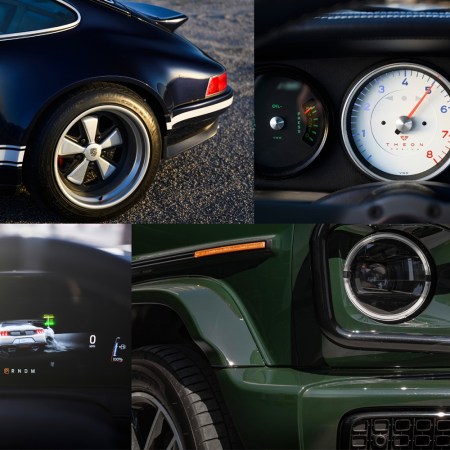When you think of a dynamic American car, the Ford Mustang is one of the most iconic names that comes to mind. Specifically, the 1965 Ford Mustang — a game-changing vehicle for both the automaker in question and the auto industry as a whole. As a 2019 article in Road & Track phrased it, “[t]he original Mustang was a sports car for the masses, and Ford sold them by the millions.”
But what if the Mustang had gone down a somewhat different route? Would it have been as highly regarded by car enthusiasts over the years? A new report from Joel Stocksdale at AutoBlog delves into the history of the 1965 Ford Mustang — and explores how it could have gone very differently.
It began when Ford archivist Ted Ryan posted some photos on Twitter of the design process behind the Mustang — including several alternative designs for the car.
Today, I am showing photos of the clays in the courtyard at PDC for the design review session on Aug 19, 1962 to select what would become the Mustang. 9 clay models (from Advanced Projects Studio, Lincoln-Mercury Studio and Ford Studio were presented #TreasuresFromFordArchives pic.twitter.com/Z4xmPclHhe
— Ted Ryan (@tedryan64) May 6, 2020
Stocksdale spoke with Ryan to learn more about the process; what he discovered offers an inside look at how an iconic car came to be.
… after having little success with early design proposals, the company asked all of its design studios — the Advanced Studio, Lincoln-Mercury Studio and Ford Studio — to submit proposals. With only about two years before the planned launch, Ford was understandably short on time, and it’s believed that the studios only had a month to create and present these designs.
Some of the designs offer a bolder take on the car, while others are more restrained. All in all, it’s an insightful look at how a fantastic car came to be — and the process that helped make automotive history.
Subscribe here for our free daily newsletter.
Thanks for reading InsideHook. Sign up for our daily newsletter and be in the know.


















